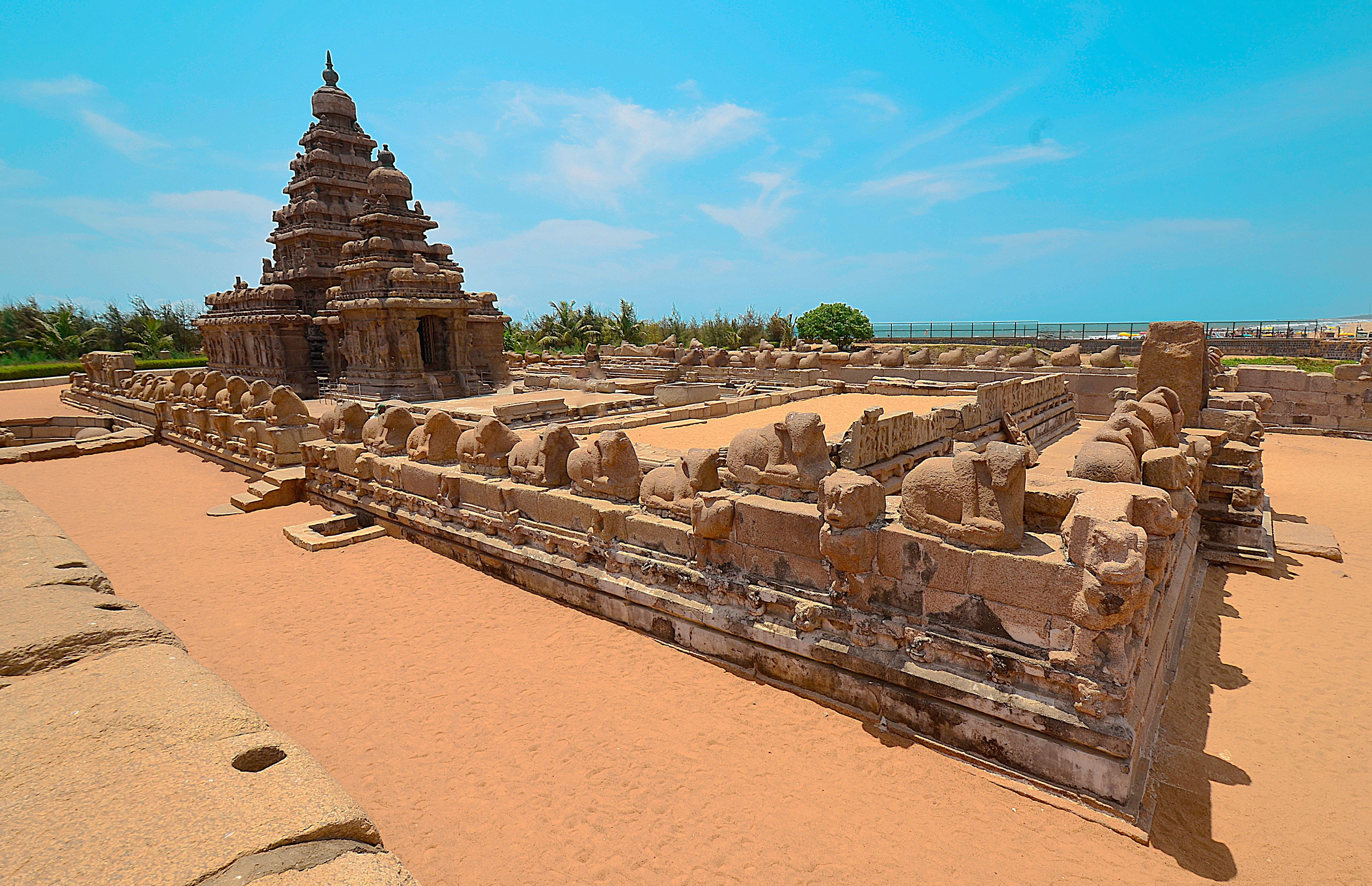Group Of Monuments At Mahabalipuram
Tell us what you need and we will respond to your query as soon as possible!

The Gather of Landmarks at Mahabalipuram could be a collection of 7th- and 8th-century CE devout landmarks within the coastal resort town of Mahabalipuram, Tamil Nadu, India and could be a UNESCO World Legacy Location. It is on the Coromandel Coast of the Narrows of Bengal, almost 60 kilometers (37 mi) south of Chennai.
The location has 40 old landmarks and Hindu sanctuaries, counting one of the biggest open-air shake reliefs within the world: the Plunge of the Ganges or Arjuna's Compensation. The gather contains a few categories of landmarks: ratha sanctuaries with solid processional chariots, built between 630 and 668; mandapa viharas (cave sanctuaries) with stories from the Mahabharata and Shaivite, Shakti or Shaaktha and Vaishnava engravings in a number of Indian dialects and scripts; shake reliefs (especially bas-reliefs); stone-cut sanctuaries built between 695 and 722, and archeological unearthings dated to the 6th century and prior.
The landmarks were built amid the Pallava tradition. Known as the Seven Pagodas in numerous colonial-era distributions, they are moreover called the Mamallapuram sanctuaries or Mahabalipuram sanctuaries in modern writing. The location, reestablished after 1960, has been overseen by the Archeological Study of India.